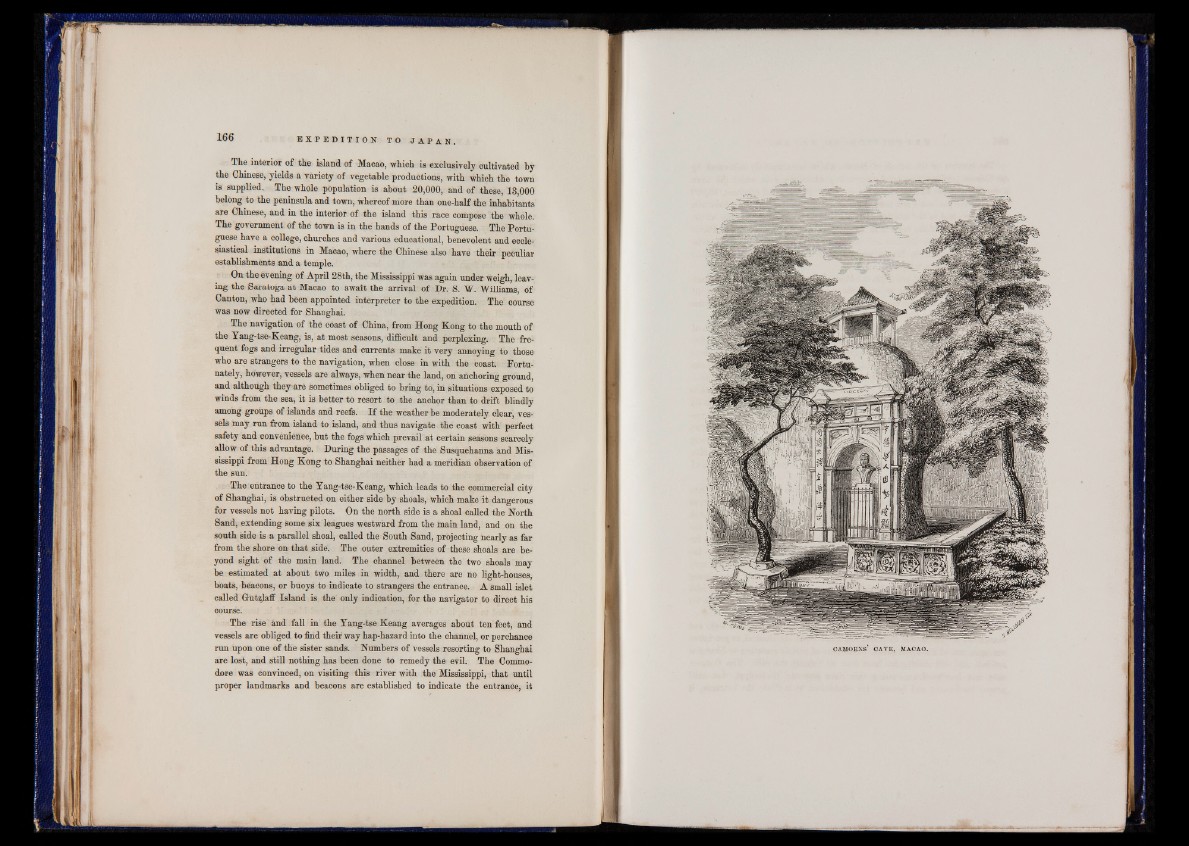
The interior of the island of Macao, which is exclusively cultivated by
the Chinese, yields a variety of vegetable productions, with which the town
is supplied. The whole population is about 20,000, and of these, 13,000
belong to the peninsula and town, whereof more than one-half the inhabitants
are Chinese, and in the interior of the island this race compose the whole.
The government of the town is in the hands of the Portuguese. The Portuguese
have a college, churches and various educational, benevolent and ecclesiastical
institutions in Macao, where the Chinese also have their peculiar
establishments and a temple.
On the evening of April 28th, the Mississippi was again under weigh, leaving
the Saratoga at Macao to await the arrival of Dr. S. W. Williams, of
Canton, who had been appointed interpreter to the expedition. The course
was now directed for Shanghai.
The navigation of the coast of China, from Hong Kong to the mouth of
the Yang-tse-Keang, is, at most seasons, difficult and perplexing. The frequent
fogs and irregular tides and currents make it very annoying to those
who are strangers to the navigation, when close in with the coast. Portu-
nately, however, vessels are always, when near the land, on anchoring ground,
and although they are sometimes obliged to bring to, in situations exposed to
winds from the sea, it is better to resort to the anchor than to drift blindly
among groups of islands and reefs. I f the weather be moderately clear, vessels
may run from island to island, and thus navigate the coast with perfect
safety and convenience, but the fogs which prevail at certain seasons scarcely
allow of this advantage. During the passages of the Susquehanna and Mississippi
from Hong Kong to Shanghai neither had a meridian observation of
the sun.
The entrance to the Yang-tse-Keang, which leads to the commercial city
of Shanghai, is obstructed on either side by shoals, which make it dangerous
for vessels not having pilots. On the north side is a shoal called the North
Sand, extending some six leagues westward from the main land, and on the
south side is a parallel shoal, called the South Sand, projecting nearly as far
from the shore on that side. The outer extremities of these shoals are beyond
sight of the main land. The channel between the two shoals may
be estimated at about two miles in width, and there are no light-houses,
boats, beacons, or buoys to indicate to strangers the entrance. A small islet
called Glutzlaff Island is the only indication, for the navigator to direct his
course.
The rise and fall in the Yang-tse Keang averages about ten feet, and
vessels are obliged to find their way hap-hazard into the channel, or perchance
run upon one of the sister sands. Numbers of vessels resorting to Shanghai
are lost, and still nothing has been done to remedy the evil. The Commodore
was convinced, on visiting this river with the Mississippi, that until
proper landmarks and beacons are established to indicate the entrance, it
OAMOEKS’ G A V E , MACAO.